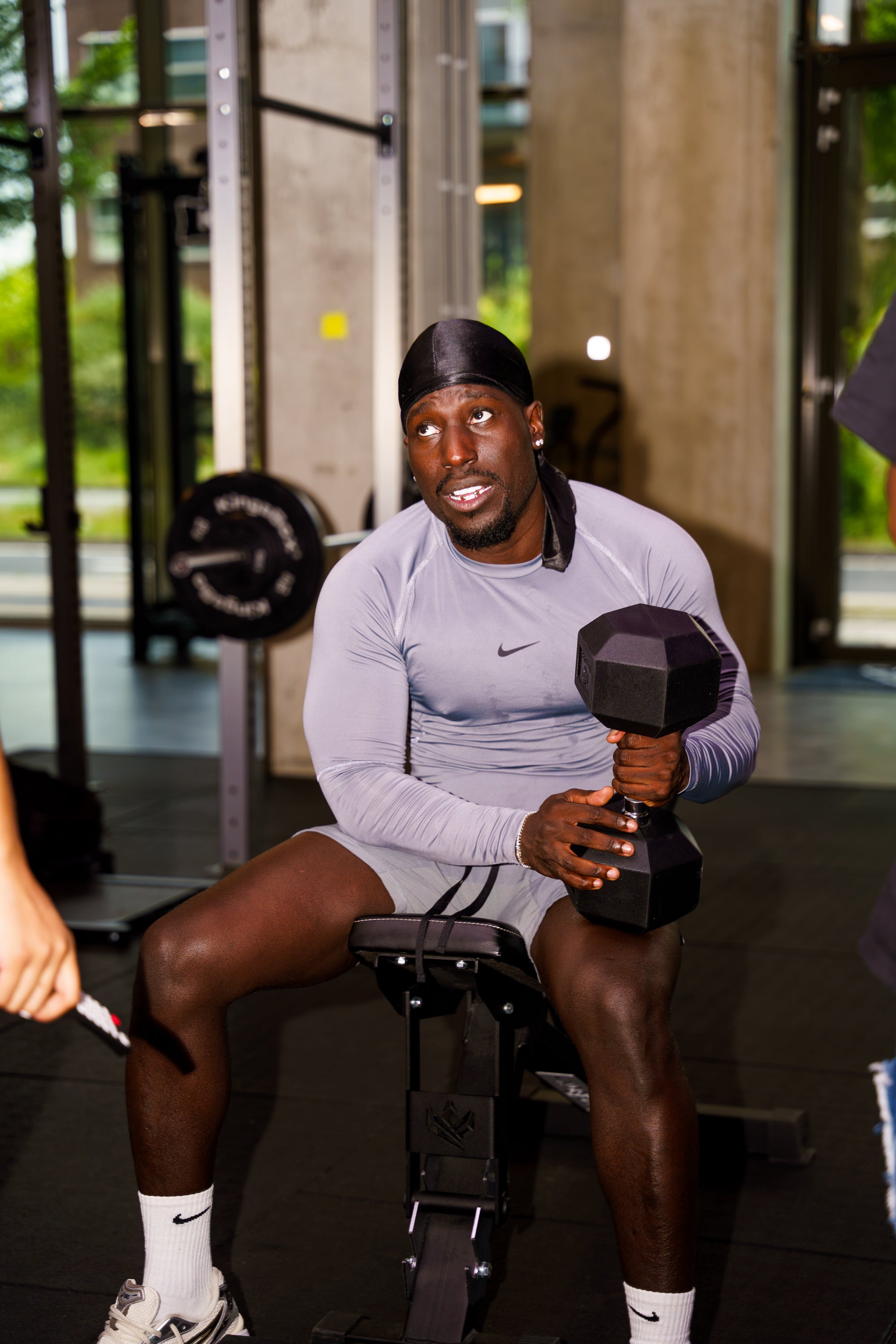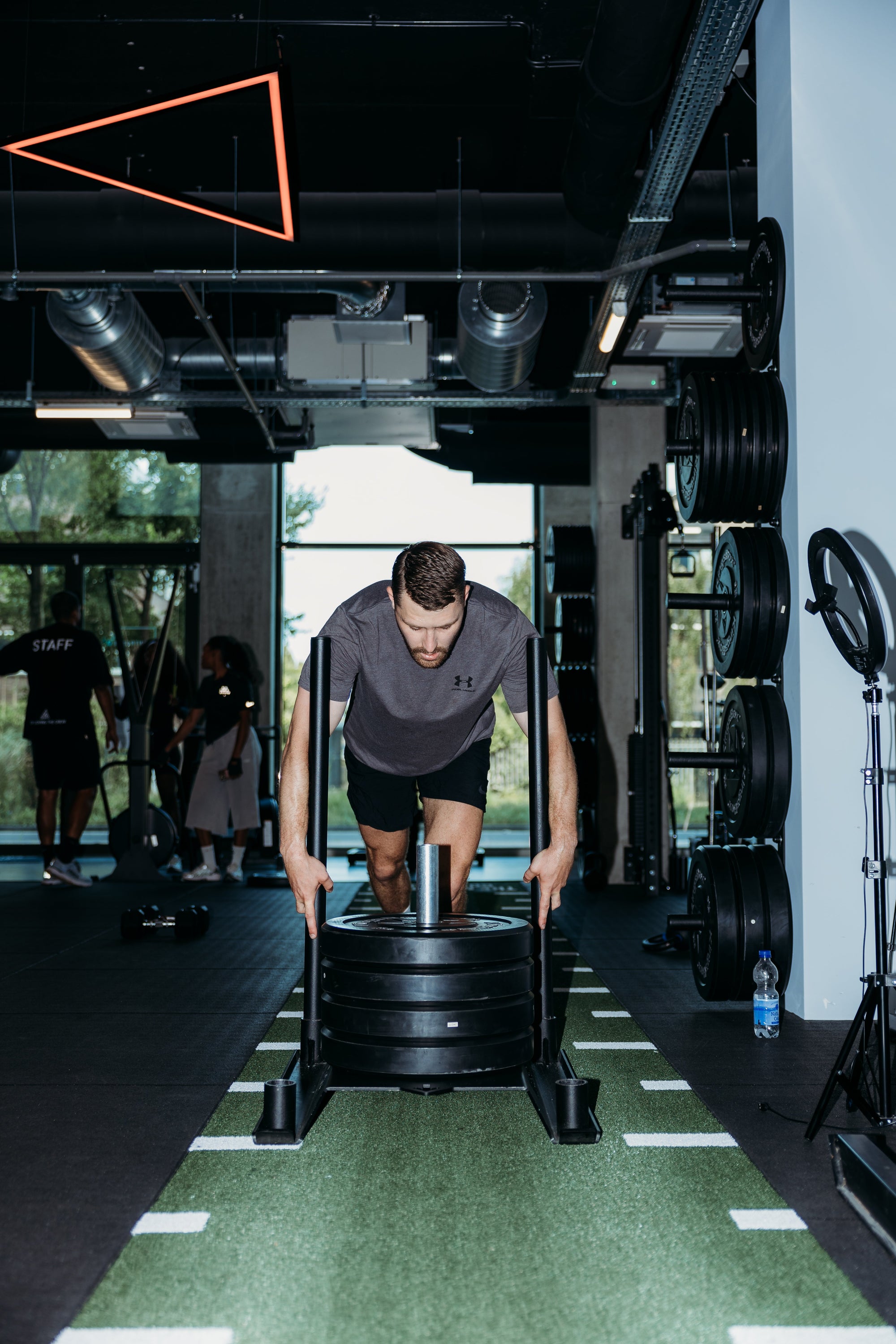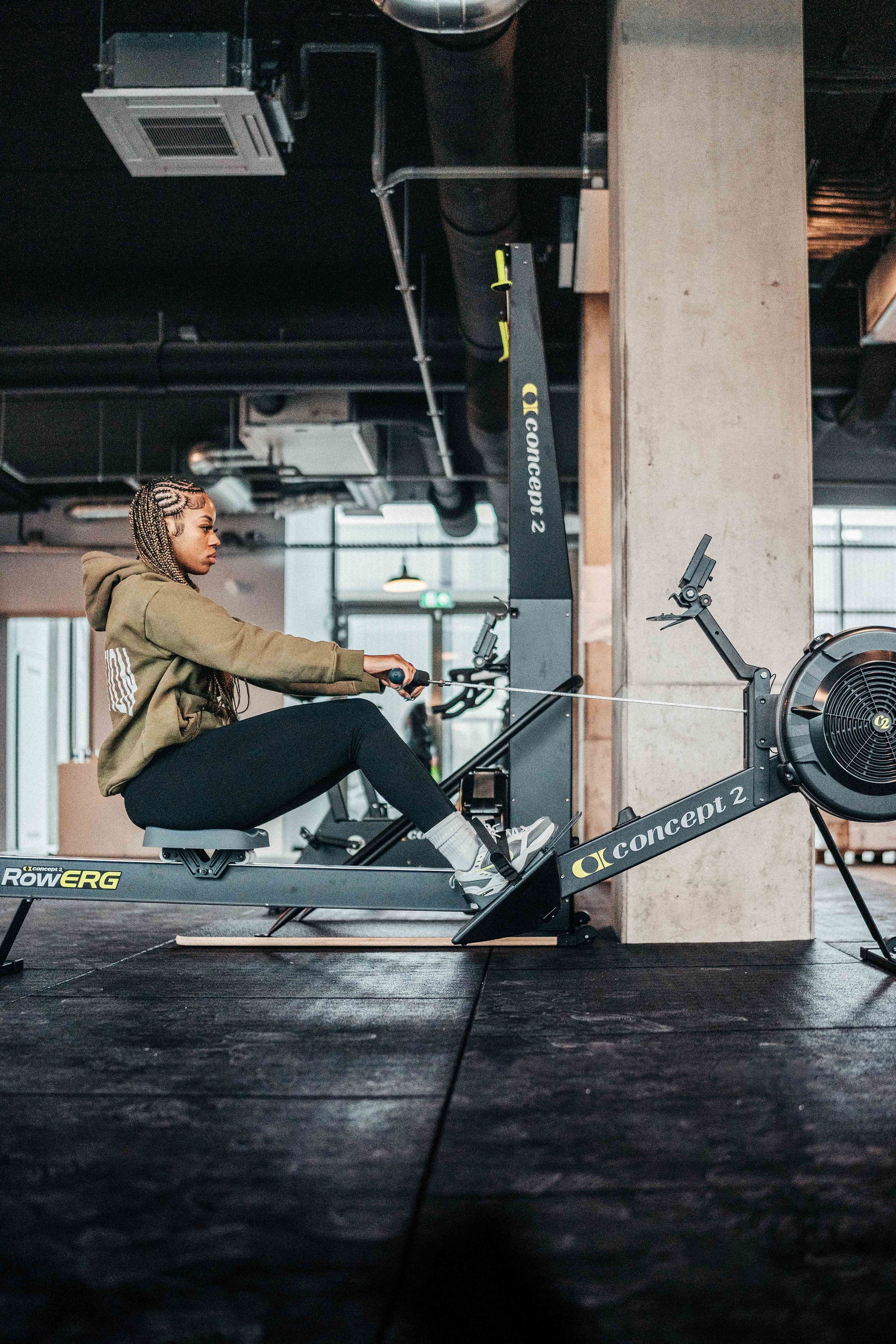Tracking Your Progress: 7 Essential Metrics to Crush Your Hyrox Training
Champion, are you ready to turn your hard work into clear, measurable victories? Tracking your progress isn’t just about numbers—it’s the secret to unlocking your full potential and smashing your Hyrox goals. At BallinFit, we know that if you can see your improvements, you’ll stay motivated and focused on becoming a true champion. Today, we’re diving into 7 essential metrics that will help you gauge your progress, tweak your training, and celebrate every win along the way.
1. Time and Speed: Measure Every Second
Why It Matters:
Every second counts in Hyrox. Tracking your sprint times, the duration of your high-intensity intervals, or how fast you complete a circuit gives you tangible proof of improvement.
How to Track:
- Sprints & Intervals: Use a stopwatch or fitness app to record your times during short bursts and recovery periods.
- Race Simulations: Periodically run a Hyrox simulation (a set of exercises mimicking a race) and note your total time.
Real-World Example:
Meet Lisa—a dedicated athlete at BallinFit. By timing her 100-meter sprints every week, she discovered she shaved off nearly 0.5 seconds after a month of consistent training. That small change translated into a huge boost during actual competitions.
Champion Tip:
Set benchmarks for each workout. When you hit those milestones, it’s proof that your efforts are paying off—and it’s incredibly motivating.
2. Heart Rate: Know Your Engine’s Performance
Why It Matters:
Your heart is the engine that powers your workouts. Monitoring your heart rate helps you understand how hard you’re working and how quickly you recover, ensuring you’re training in the optimal zones for both strength and endurance.
How to Track:
- Resting Heart Rate: Measure your heart rate first thing in the morning. Over time, a lower resting heart rate can indicate improved cardiovascular fitness.
- During Workouts: Use a heart rate monitor or smartwatch to keep track of your exertion levels. Look at your peak heart rate and recovery time after intervals.
Real-World Example:
Tom, another champion in the making at BallinFit, noticed his heart rate recovery improved significantly after he adjusted his training intensity. By tracking how fast his heart rate dropped post-exercise, he was able to fine-tune his workouts to maximize efficiency.
Champion Tip:
If your recovery heart rate is slow, consider dialing back the intensity a bit. It’s all about finding that perfect balance where your heart is challenged, but not overtaxed.
3. Repetition Counts: How Many, How Often
Why It Matters:
Reps aren’t just numbers—they’re a direct measure of your strength and endurance gains. Tracking the number of repetitions you complete in exercises like wall balls, push-ups, or squats helps you see incremental improvements over time.
How to Track:
- Workout Logs: Write down the number of reps you complete for each exercise during your sessions.
- Digital Apps: Use fitness apps that allow you to log your workouts and compare results over weeks or months.
Real-World Example:
Consider James, who started with 20 push-ups per set. After consistent training, he found that within two months, he was effortlessly hitting 40 push-ups per set. Tracking his progress kept him motivated and helped him adjust the weight and intensity of his exercises.
Champion Tip:
Celebrate even the smallest increases. Every extra rep is a step toward building the endurance and strength you need for Hyrox.
4. Weight and Resistance: Increase Your Load
Why It Matters:
Progress in strength training is often measured by how much weight you can lift or how much resistance you can handle. Tracking these numbers shows that you’re not just maintaining your strength—you’re building it.
How to Track:
- Workout Diaries: Record the weights or resistance levels you use for key exercises such as squats, deadlifts, and kettlebell swings.
- Progressive Overload: Note each time you successfully increase the load or number of repetitions at a given weight.
Real-World Example:
Emma began her strength training journey with lighter weights, but within three months, she was lifting significantly heavier loads with perfect form. Tracking her progress was crucial in motivating her to push further and adjust her training for continuous improvement.
Champion Tip:
Focus on gradual increases. Even a small jump in weight can lead to big improvements over time.
5. Flexibility and Mobility: Track Your Range of Motion
Why It Matters:
Flexibility isn’t just for yoga enthusiasts—it’s a key performance indicator in Hyrox training. A greater range of motion means better technique and reduced injury risk.
How to Track:
- Flexibility Tests: Regularly perform simple tests, like touching your toes or measuring the distance of a seated forward bend.
- Mobility Drills: Track how your mobility improves in exercises that require a wide range of motion, such as deep squats or dynamic stretches.
Real-World Example:
At BallinFit, many athletes incorporate regular flexibility assessments into their routine. Mark, for instance, noted that his range of motion improved by 10% after he started incorporating dedicated mobility drills into his warm-up and cool-down sessions. This improvement directly translated to better performance in dynamic movements.
Champion Tip:
Don’t overlook the importance of flexibility. It’s the foundation for executing every exercise with precision and power.
6. Recovery Metrics: Monitor How Well You Bounce Back
Why It Matters:
Recovery is as important as training. Tracking how quickly your body bounces back from workouts can give you insight into your overall fitness and help prevent overtraining.
How to Track:
- Sleep Quality: Use sleep tracking apps or devices to monitor your sleep duration and quality. Better sleep means better recovery.
- Muscle Soreness: Keep a journal of your muscle soreness levels after workouts to determine if you’re recovering properly.
- Resting Heart Rate: As mentioned, a lower resting heart rate over time can be a sign of improved recovery and fitness.
Real-World Example:
One of our athletes, Lisa, started tracking her sleep and muscle soreness. By adjusting her recovery strategies—adding more active recovery days and ensuring she got enough sleep—she noticed a significant improvement in her performance and reduced fatigue during training sessions.
Champion Tip:
Treat recovery metrics as seriously as your workout stats. They’re the key to long-term success and consistent performance.
7. Overall Progress: Compare Your Before and After
Why It Matters:
Sometimes, the best metric is the overall picture. Comparing where you started to where you are now can be incredibly motivating and insightful.
How to Track:
- Progress Photos: Take photos at regular intervals to visually document your transformation.
- Benchmark Tests: Perform benchmark workouts periodically (like a Hyrox simulation) to see how your times and repetitions have improved.
- Training Journal: Keep a detailed journal of your workouts, how you feel, and any milestones you hit along the way.
Real-World Example:
James kept a detailed training journal and progress photos over six months. Looking back, he could clearly see improvements not just in his physique but in his overall performance and energy levels. This comprehensive view of his progress helped him stay motivated and set new, higher goals.
Champion Tip:
Reflect regularly. The journey to becoming a champion is filled with small wins that add up to big victories.



